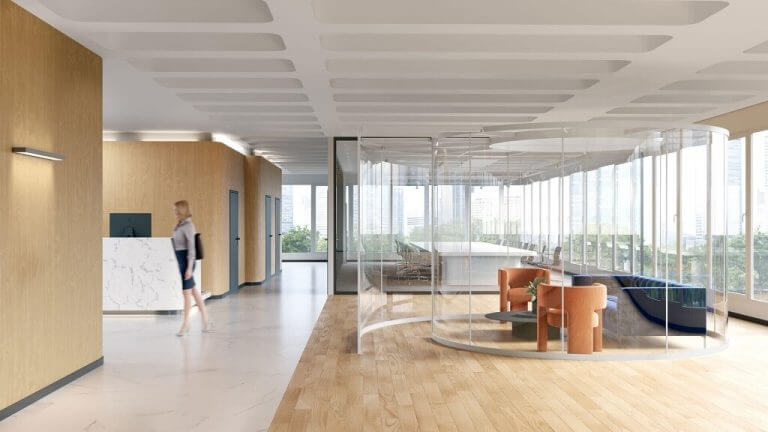Creativity often feels like an elusive spark—sometimes it flares up unexpectedly, illuminating everything in its path, while at other times, it seems frustratingly out of reach, leaving us staring at a blank page or project. Many of us view creativity as something we can't control, something that strikes when it chooses. But what if we could influence it more than we realize? What if the key to igniting that spark consistently lies not just within us but also in our surroundings?
1. Embrace Natural Light
Natural light is a powerful mood booster and can significantly enhance your creativity. Studies show that exposure to natural light improves cognitive performance, mood, and energy levels. Try positioning your desk near a window to let in as much sunlight as possible during the day. If that's not an option, consider investing in full-spectrum bulbs that mimic natural daylight.
- Position Your Desk Near a Window: Maximizing natural light can enhance mood and creativity. If possible, arrange your workspace near a window to take full advantage of sunlight.
- Use Reflective Surfaces: If your space lacks natural light, mirrors or reflective surfaces can help bounce light around the room, making it feel brighter and more spacious.
- Invest in Daylight Lamps: In dim or windowless spaces, opt for full-spectrum or daylight bulbs that mimic natural light to maintain energy and focus.
A minimalist workspace might look appealing, but too much minimalism can stifle creativity. A few personal items, like inspiring artwork, photos, or meaningful objects, can trigger imaginative thinking. Strike a balance between a clean, organized environment and a space that reflects your personality and interests. You want to feel comfortable and energized without overwhelming your senses.
- Organize with Purpose: Use organizational tools like shelves, trays, or baskets to keep your workspace tidy, but allow space for creative clutter, such as notes or sketches.
- Create a “Clutter Zone”: Designate one small area, like a corkboard or a corner of your desk, where you can collect inspirational objects or ideas without feeling overwhelmed.
- Regularly Refresh Your Space: Every few weeks, clear out unnecessary items and refresh your workspace with new elements, such as a different piece of art or a plant, to keep things inspiring.
3. Add Greenery
Plants are more than just decoration—they’re productivity enhancers. Greenery can reduce stress, improve air quality, and increase feelings of well-being. Studies have shown that the presence of plants in a workspace can boost creativity and focus. Low-maintenance plants like succulents, snake plants, or pothos are great choices for an office setting.
- Choose Low-Maintenance Plants: If you’re not a plant expert, start with easy-to-care-for plants like succulents, snake plants, or cacti that can thrive in most environments.
- Place Plants Strategically: Position plants near your workspace where you can see them regularly. Their presence can enhance your mood and creativity.
- Rotate or Add Seasonal Greenery: Consider adding fresh flowers or seasonal plants to introduce a rotating element of nature into your workspace.
4. Incorporate Color Mindfully
Colors affect our emotions and cognitive processes in significant ways. For example, blue tends to encourage calm and focus, while yellow stimulates creativity and optimism. Red can energize, while green fosters harmony and balance. Use color to your advantage by integrating hues that promote the kind of mindset you want to cultivate. You could paint an accent wall, use colorful office supplies, or even add a vibrant piece of art to inspire you.
- Use Accent Walls: Painting one wall in a bold, creative color like yellow or blue can instantly energize a room without overwhelming it.
- Incorporate Colorful Art or Decor: If painting isn’t an option, add vibrant artwork, rugs, or decorative objects that inspire creativity and reflect your personality.
- Experiment with Personal Palettes: Test different colors to see which ones resonate with your creative energy. You might find certain hues boost your focus, while others encourage imaginative thinking.
5. Create Zones for Different Activities
If your workspace allows, designate different areas for different tasks. For instance, a sitting or lounge area can be ideal for brainstorming or taking creative breaks, while a separate desk area can be used for focused work. Switching environments—even within the same room—can stimulate new ideas and prevent creative ruts.
- Designate a Brainstorming Area: Create a comfortable corner with a couch or chair where you can brainstorm, sketch, or mind-map away from your main desk.
- Set Up a Quiet Zone: For focused work, set up a clutter-free area that minimizes distractions, allowing you to get into a deep flow.
- Include a Relaxation Space: Having a small space for quick breaks—whether it’s for meditation, stretching, or a few minutes of rest—can help recharge your creativity.
6. Curate Your Sound Environment
Noise can be either a creativity killer or enhancer, depending on the type of work you’re doing and your personal preferences. Some people thrive in complete silence, while others find background noise helpful for concentration. Consider experimenting with different soundscapes, such as ambient music, nature sounds, or white noise. If you work in a noisy environment, invest in noise-canceling headphones to create your own auditory bubble.
- Try Background Music: Play instrumental or ambient music in the background to stimulate focus and creativity, especially if you prefer some sound while working.
- Experiment with Nature Sounds: Nature sounds like rain, ocean waves, or birdsong can create a calming atmosphere that fosters creative thinking.
- Use Noise-Canceling Headphones: If you work in a noisy environment, invest in quality noise-canceling headphones to block out distractions and create a focused, peaceful space.
7. Add Textures and Personal Comforts
Incorporating various textures into your workspace can stimulate your senses and provide comfort. Think soft cushions, wool throws, or a warm, tactile desk mat. Personal comforts like a cozy chair, ergonomic accessories, or even a footrest can also improve your physical well-being, allowing you to focus more on creativity rather than discomfort.
- Incorporate Soft Furnishings: Adding soft textures like a throw blanket, a cushion, or a cozy rug can make your workspace feel more inviting and relaxing.
- Upgrade Your Chair: Choose an ergonomic chair that supports your back and promotes good posture, so you can work longer without discomfort.
- Mix Materials: Experiment with different textures, such as wood, metal, and fabric, to add visual interest and tactile stimulation to your workspace.
8. Incorporate Visual Inspiration
Having visual prompts around you can trigger new ideas and keep your creativity flowing. Pin up inspirational quotes, mood boards, sketches, or even random clippings from magazines. These visual cues can serve as constant reminders to stay inspired and think outside the box. A corkboard or a magnetic wall can give you the flexibility to change things up when you need fresh inspiration.


- Create a Mood Board: Pin up images, colors, and objects that inspire you on a corkboard or magnetic wall to spark creative ideas.
- Use Inspirational Quotes: Surround yourself with quotes from people you admire or phrases that motivate you to stay productive and focused.
- Rotate Visual Elements: Regularly switch up the artwork or photos in your workspace to keep your environment fresh and exciting, fueling your creativity.
9. Don’t Forget the Power of Breaks
No matter how perfectly designed your workspace is, overworking can kill creativity. Incorporate breaks into your daily routine to let your mind recharge. A designated break space or an area where you can step away from your desk can do wonders. Go for a short walk, stretch, or meditate for a few minutes to reset your brain.


- Set a Timer for Breaks: Use the Pomodoro technique or a similar time management method to schedule regular breaks throughout your day.
- Move Around: Incorporate light stretching or a short walk into your break routine to refresh your body and mind, helping new ideas flow.
- Use a Designated Break Space: If possible, set up a different area for taking breaks—whether it’s a nearby couch or a different room—so you can step away from your work and return refreshed.
10. Keep It Flexible
Your needs and creative processes might change over time, so it’s important to keep your workspace adaptable. Use furniture and tools that can be rearranged or repurposed as needed. A standing desk, adjustable lighting, or mobile storage units can give you the flexibility to modify your space as your projects or mood shift.


- Use Adjustable Furniture: Invest in flexible furniture, like a sit-stand desk or mobile storage units, so you can easily rearrange your space to fit different projects or moods.
- Create Modular Workspaces: Use movable partitions, rolling carts, or multi-functional furniture that can adapt to your evolving needs as you work.
- Embrace Change: Periodically switch up your workspace layout to keep things fresh and inspiring, helping to stimulate new ideas and perspectives.
If you’re ready to transform your space with customized storage solutions, our team at Interior Solutions is here to help. We specialize in creating bespoke designs that meet your unique needs and elevate your space. Contact us today to explore the possibilities!








